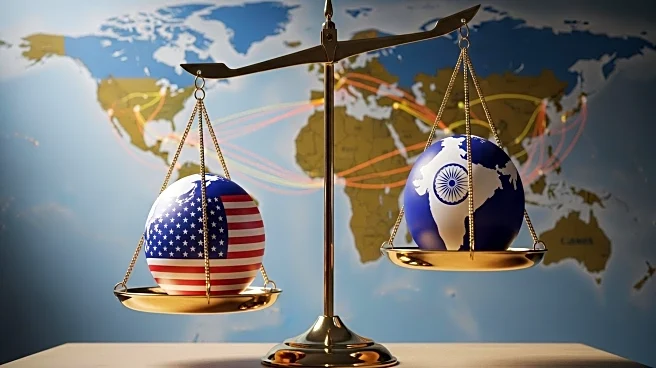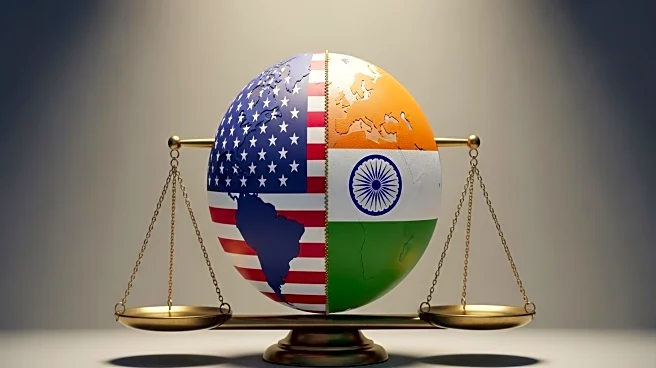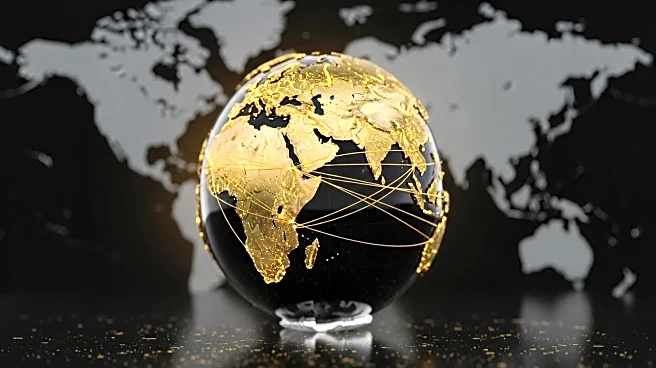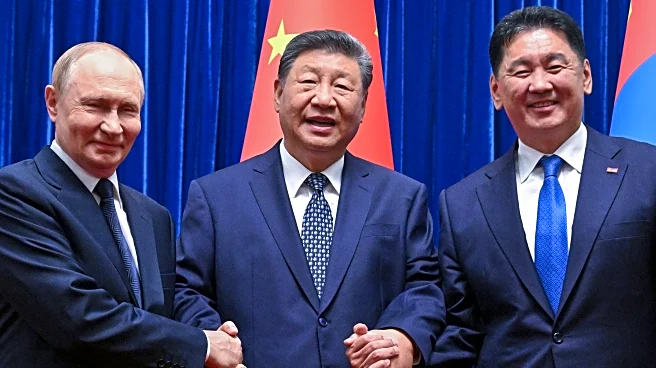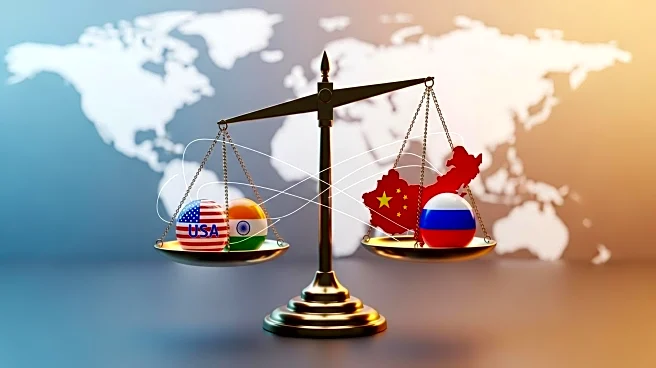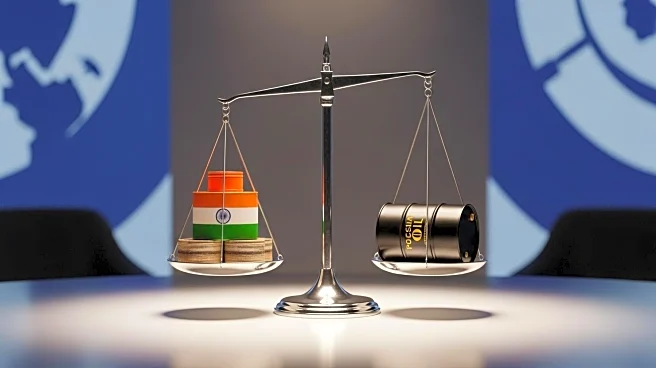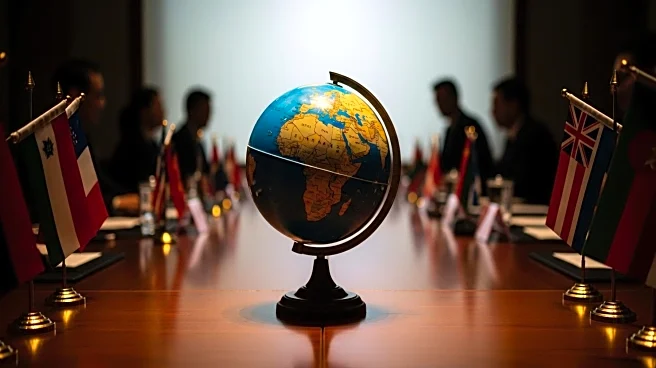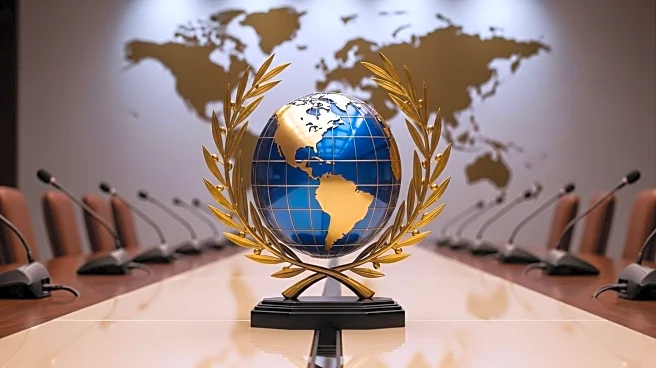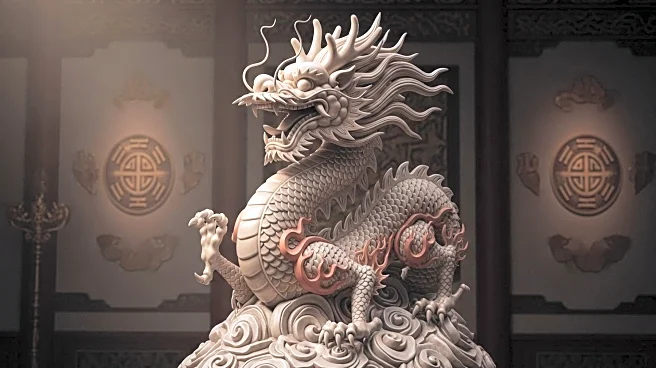What's Happening?
President Trump has imposed a 25 percent tariff on India in response to its purchase of Russian oil, escalating tensions between the two nations. This move comes after a series of negotiations aimed at reaching a trade agreement, which have been stalled due to disagreements over access to India's dairy and agriculture markets. The tariffs, which took effect recently, place India among the highest tariff burdens of any U.S. trading partner. The situation is further complicated by Trump's trade adviser, Peter Navarro, who criticized India for its continued oil purchases from Russia, labeling the conflict in Ukraine as 'Modi's war.' Despite these tensions, Prime Minister Narendra Modi is visiting China, potentially signaling a shift in alliances.
Why It's Important?
The imposition of tariffs on India by President Trump could have significant implications for U.S.-India relations and global trade dynamics. The tariffs may strain the economic ties between the two countries, potentially affecting industries reliant on bilateral trade. Additionally, India's increased purchase of Russian oil could impact geopolitical alliances, as the U.S. seeks to counter China's influence. The situation underscores the complexities of international trade negotiations and the potential for economic policies to influence diplomatic relations. Stakeholders in both countries, including businesses and policymakers, may face challenges in navigating the evolving trade landscape.
What's Next?
The future of U.S.-India trade relations remains uncertain as both countries continue to negotiate terms. An agreement may be reached soon, but the long-term impact on their relationship will depend on whether they view each other as true allies or mere partners of convenience. Modi's visit to China could further complicate matters, as it may indicate a shift in India's diplomatic stance. Observers will be watching for any changes in trade policies or alliances that could arise from these developments.
